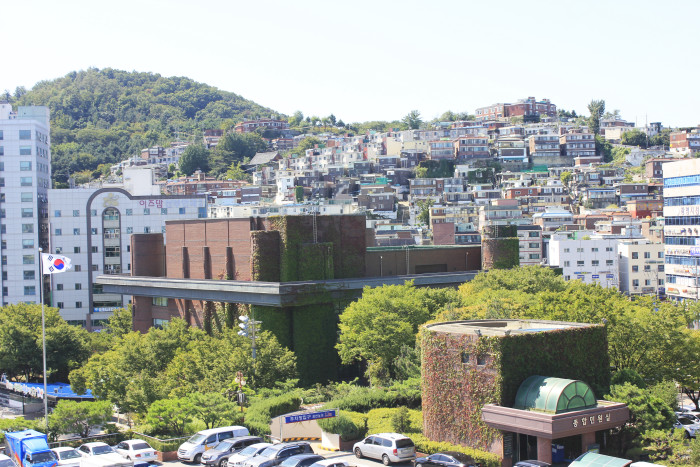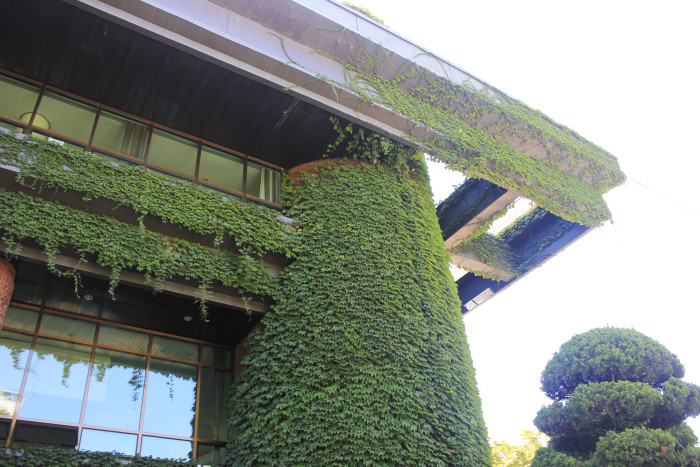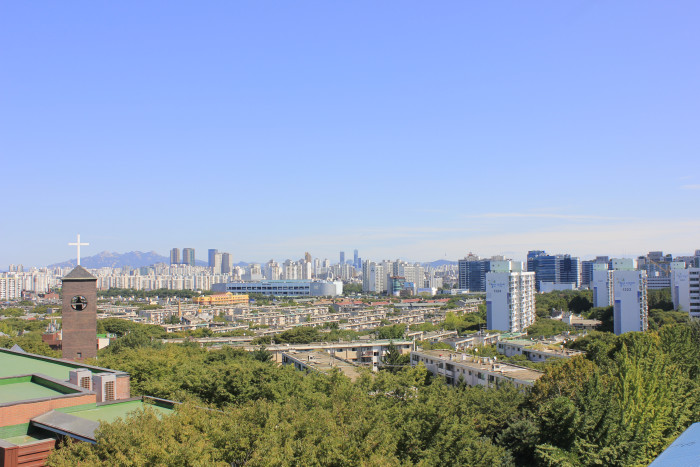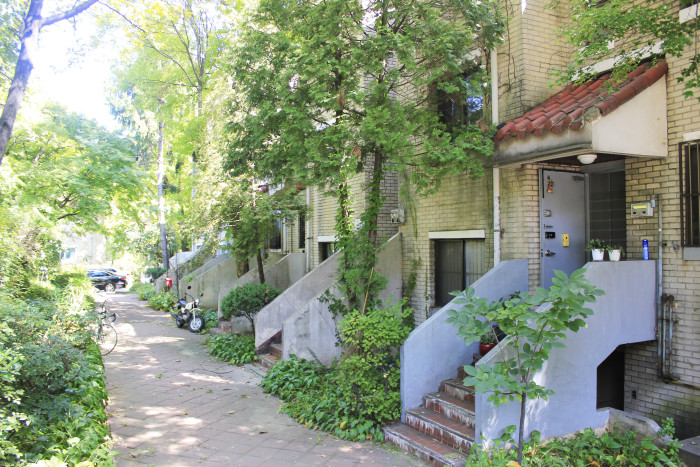경기문화재단
Gwangmyeong_Look back at the 100-year-old history of Gwangmyeong (2)
As a province adjacent to Seoul, the country's capital city, Gyeonggi-do has inherited a vast amount of Korea's modern cultural heritage as the country has undergone a turbulent modern history, ranging from the latter part of the Joseon Dynasty to the Japanese Occupation Period followed by the national liberation and division, the Korean War, and the impressive industrialization and democratization processes. “Modern Cultural Heritage of Gyeonggi” will feature an introduction to the modern culture of Gyeonggi-do together with a discussion about the history, identity and values of the Province in terms of cultural heritage. |
Writer | Yeon-gyeong Lee
The relocation of the center: Gwangmyeong City Hall and Cheolsan Apartments
As the neighborhood of Gwangmyeong Sageori was developed as a residential area through a land readjustment project in 1968 and the Guro Industrial Complex started operation in earnest in the 1970s, Cheolsan-dong of Gwangmyeong-si also grew as a residential area for the Guro Industrial Complex. When Gwangmyeong was raised in status to Gwangmyeong-si in 1981, it was separated from Siheung-gun. Later, the center of Gwangmyeong-si was moved to Gwangmyeong-dong and Cheolsan-dong in the north, and Gwangmyeong City Hall and Gwangmyeong Citizens' Hall were built in Cheolsan 3-dong.
The construction of Gwangmyeong City Hall and Gwangmyeong Citizens' Hall was completed in 1983. These buildings were designed by Kim Swoo Geun in his later years. Gwangmyeong City Hall is a three-story building with horizontal bands on each floor. The higher the floor, the more prominent the horizontal bands are. The red bricked columns on the first floor form a peristyle. The columns forming a peristyle create horizontal bands and patterns with bricks with a unique shape. The peristyle as a vertical element and horizontal bands as a horizontal element are modern expressions of traditional Korean architecture which were trendy in architectural circles at the time. The Gwangmyeong City Hall central entrance is very symmetrical, and inside has a well-lighted courtyard. The courtyard has a coffee shop, rest area, roof garden, and indoor garden for citizens. The inside of Gwangmyeong City Hall seems very friendly to citizens, unlike its authoritative exterior.

〈 Masonry columns and horizontal bands of Gwangmyeong City Hall 〉

〈 Gwangmyeong City Hall's peristyle 〉
Formativeness is more emphasized in Gwangmyeong Citizens' Hall than Gwangmyeong City Hall. The columns of Gwangmyeong Citizens' Hall were expanded in size and became an important element in this building. Its columns have a sculptural form just like Gwangmyeong City Hall, and an iron horizontal band surrounds the huge columns, forming the whole frame of the building. Although the building may look like a monumental or authoritative structure because of its huge mass and simple design, its authoritative atmosphere is softened by bricks that show the human scale. Gwangmyeong Stadium is situated right next to Gwangmyeong Citizens' Hall. Gwangmyeong City Hall, Gwangmyeong Stadium, and Gwangmyeong Citizens' Hall form one block. All of these spaces are open to the public on weekends. They are not buildings for the government, but places for citizens.

〈 Gwangmyeong Citizens' Hall 〉

〈 Gwangmyeong Citizens' Hall's ivy-covered circular mass and horizontal band 〉

〈 Gwangmyeong Stadium 〉
You can see Cheolsan-dong Jugong Apartments in the northeast from the roof garden of Gwangmyeong City Hall. Cheolsan-dong Jugong Apartments were constructed in the mid 1980s, showing a variety of housing experiments. In particular, the three-story townhouses stand out in Cheolsan Jugong Apartment Complex 8, located to the north of Gwangmyeong City Hall. Each home consists of three floors. The cul-de-sac concept is used with the complex. Dead-end roads are situated in front of the houses, and each house is adjacent to the outdoor garden. It has been about 30 years since the houses were built. Residents have decorated their houses in their own ways by installing a new door and gardening their front yards. Although this residential area will be redeveloped soon, it is a valuable place to be recorded and remembered as a new type of apartment built in the mid 1980s.

〈 The view of Cheolsan Jugong Apartments from the roof garden of Gwangmyeong City Hall 〉

〈 Townhouses of Cheolsan Jugong Apartment Complex 8 〉
For 100 years, which is not an awfully long time, Gwangmyeong-si has been going through a lot of changes as the center of Seo-myeon, Siheung-gun, a mineral producer, and an outskirts residential area of Seoul. Gwangmyeong is facing another rapid change with the development of the Gwangmyeong Station area and the redevelopment of Cheolsan Jugong Apartments. Looking back and record the memories of the 100 year history of Gwangmyeong. 100 years is not a short time, either. I hope that its history and memories can be remembered and recorded.
<ggc의 모든 콘텐츠는 저작권법의 보호를 받습니다.>
세부정보
Modern Cultural Heritage in Gyeonggi-do
Writer/ Yeon-gyeong Lee (Research Professor of Yonsei University)